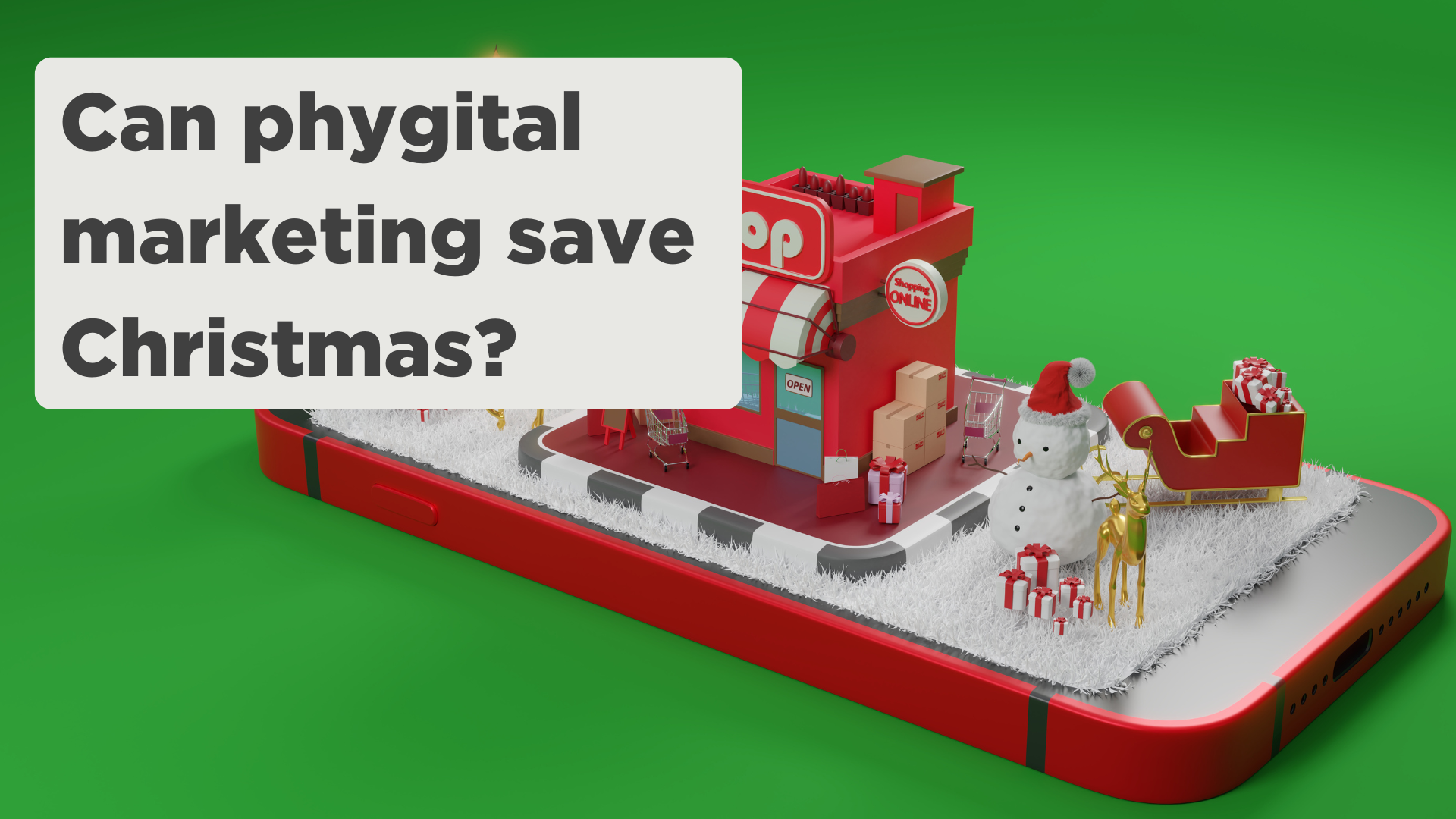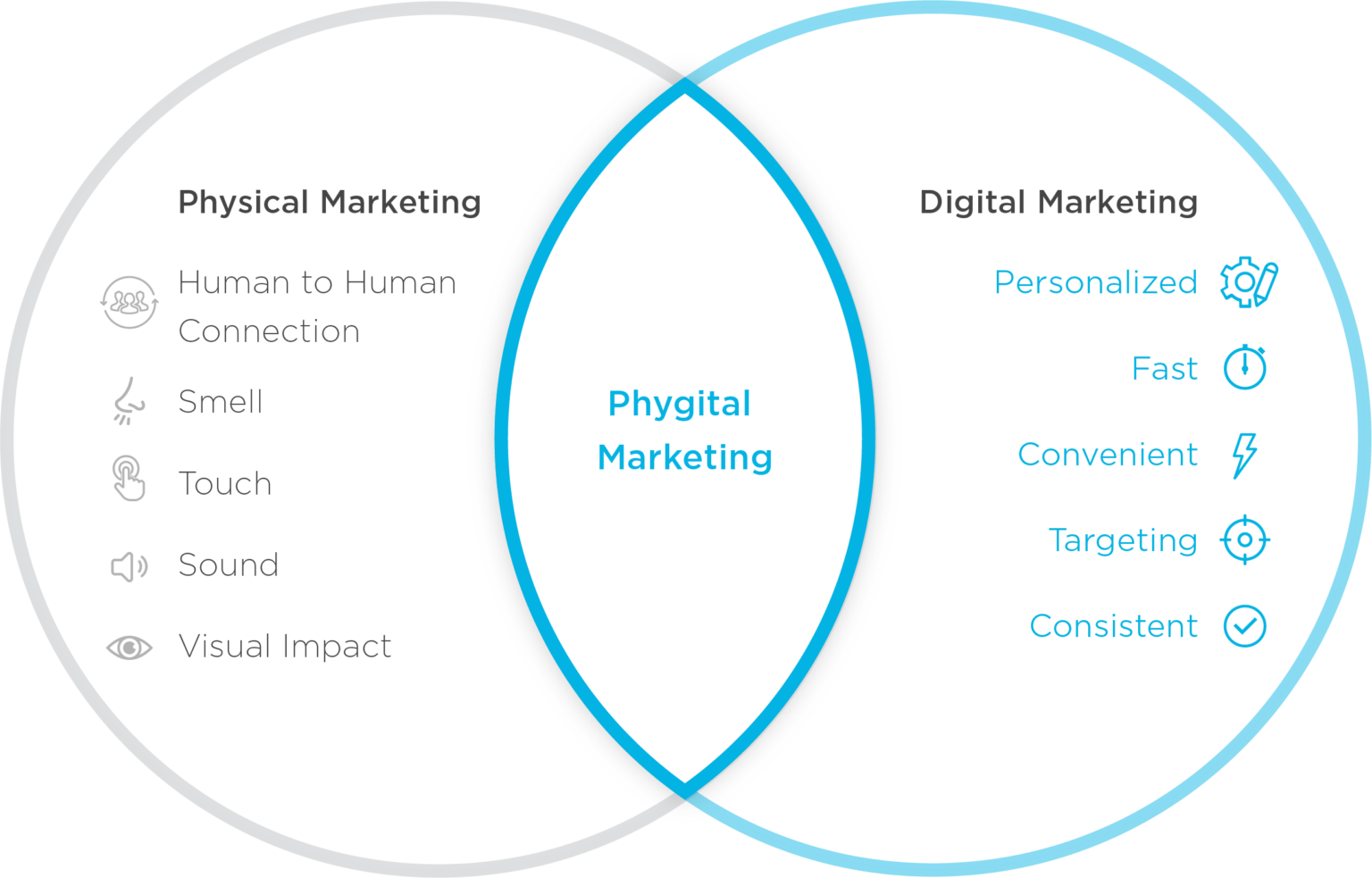Can phygital marketing close the communications gap at Christmas?
Phygital marketing has been around since 2007, with more marketers embracing its role in their communications. We’ve also seen the integration between physical and digital (phygital) become more sophisticated as technology works to close the gap and create real engagement with customers.
How can this help businesses at Christmas? Andrea Candy from Zipform Digital explores the possibilities.
Whilst Christmas traditionally has a strong retail focus, it is also a period when customers are looking to embrace meaningful connections. Phygital – a combination of the words “physical” and “digital” which connects the idea of blending bricks and mortar stores with digital – is no longer just a retail marketing concept, but also a real option for marketers.
The cross over between the physical and digital world can be visualised below. We can see the individual benefits of physical and digital marketing, and the crossover which is “phygital” marketing.
Phygital marketing has the unique ability to create a more human, connected and engaging experience for customers. So, is it worth the time and investment, especially during the festive period?
How can you make phygital marketing effective?
For many businesses, being able to connect with their customers in a primarily digital environment is key when seeking to create a consistent, value-driven experience.
Consumers place a high level of trust in businesses who either provide a tangible product or have a brick-and-mortar presence they can physically experience. For most operating in the “service” oriented space such as Energy Retailers or even Local Government, that’s not an available option. For service-oriented businesses such as energy retailers or local governments, the challenge lies in offering a physical, tangible experience.
So how can phygital marketing actually help in the real world?
You need to keep in mind that there is no science to the “split” – it’s more about bridging the gap between physical and digital and ensuring the customer experience makes sense at the same time.
A business could add a digital element to a physical event such as a tradeshow or sponsored event in the form of real time QR code polls or surveys. Events are also a great opportunity to integrate gamification into the experience – such as asking attendees to visit the company website and complete a series of tasks for the chance of an instant win, all whilst gathering valuable insights for future campaigns.
Rather than requiring a physical product at an event – which may not be feasible for many service-based businesses - product demonstrations can be made digital through video or animations.
Imagine a printed council rates notice received through the letterbox offering more than just billing information, with a QR code unlocking valuable information for ratepayers.
The key to effective phygital integration is to ensure it is engaging, is used meaningfully and adds value to the customer.
But, Christmas?
Many marketers who are not in the retail industry question whether marketing during the Christmas period is worthwhile as it is without doubt a cluttered environment. Letterboxes are full of catalogues; inboxes are at capacity and retail stores are vying for foot traffic and dollars. Share of ad spend during this time primarily belongs to retail businesses as their peak trading period of the year.
For businesses not in the retail sector, Christmas can offer a unique opportunity to not only strengthen customer relationships and showcase your brand’s personality.
Essential service notifications of call centre trading hours or office reception opening hours, also provides an opportunity to create a meaningful brand connection beyond the transactional communications the customer has received throughout the year. It’s an ideal mechanism to enable a “surprise and delight” retention Christmas campaign for loyal customers using thoughtful and physical touches.
In the not-for-profit space, Christmas is a key period, and their annual Christmas fundraising campaigns provide a great opportunity to take donors on an online journey of “giving back” or create personalised online acknowledgements of the donation. Donor retention is critically important, especially in an environment of decreasing donations in Australia.
Despite being around for many years, phygital marketing is only in the early stages of usage, and many marketers are yet to consider the many possibilities.
As more businesses look to integrate this strategy within their day-to-day operations, it means that more customer communications providers such as Zipform Digital are investing in the technology to enable the transition for their customers and gearing up for the phygital revolution.
Andrea Candy is Head of Customer Relationships and Growth and specialises in understanding the rapidly changing digital landscape in Australia that Zipform Digital clients are navigating. She genuinely strives to understand her client’s business, challenges and the demands they have in delivering value to their customers whilst also achieving growth targets.


